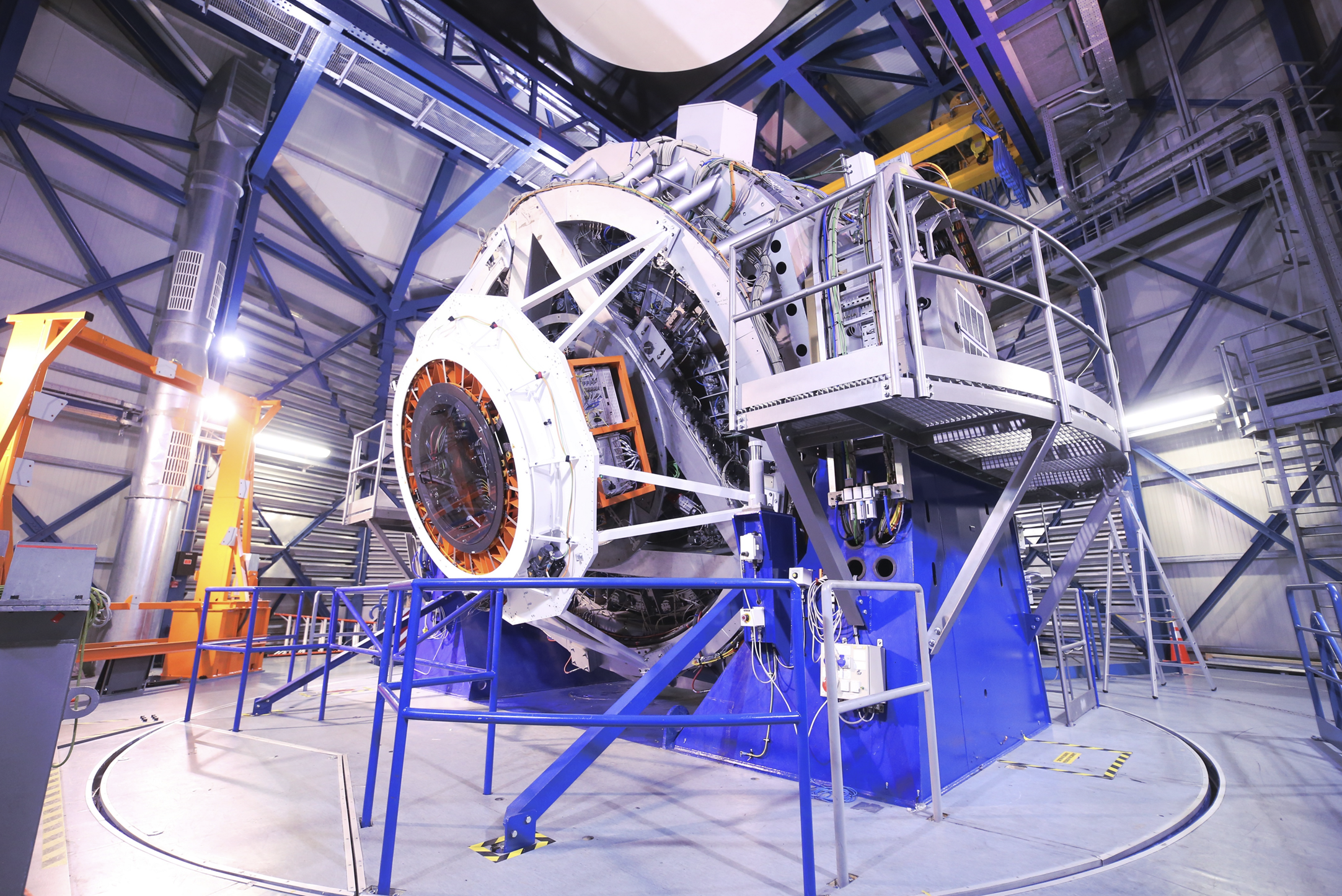
Scientists are celebrating a new era of cosmic discovery after their revolutionary new telescope captured its first data from the universe.
The 4MOST telescope will explore the formation and evolution of stars and planets alongside galaxies and blackholes at a rate not seen before.
Astronomers from the universities of Southampton and Portsmouth are part of the project team, which includes more than 700 scientists worldwide.
The 4MOST super-scope, known as the four-metre Multi-Object Spectroscopic Telescope , operates from the European Southern Observatory in Chile. It can measure the light of nearly 2,500 celestial objects at a time, helping astronomers study their chemical composition and properties.
Dr Phil Wiseman from the University of Southampton will be working to crunch the massive amounts of data produced by the telescope.
He said: "4MOST is poised to crack the universe's biggest secrets. We'll be getting the most precise measurement ever of dark energy, the mysterious force tearing the cosmos apart."
The analysis will be undertaken by a collaboration of 4MOST named the Time-Domain Extragalactic Survey (TiDES) that primarily targets exploding stars, of which the universities of Southampton and Portsmouth are founding members.
Dr Wiseman added: "Through our TiDES work, we're building the largest catalogue of supermassive blackhole masses and unlocking the secrets of the universe's rapid evolution.
"By weighing a massive catalogue of 1,000 monster blackholes and observing 10,000 lensed galaxies, we will finally understand the engine driving cosmic expansion and galaxy growth."
Thousands of clever fibre cables
The 4MOST telescope has been equipped with nearly 2,500 fibres, each one the size of a human hair, which will be used to build a map of how galaxies form and how supermassive blackholes were born.
.jpeg)
Southampton astrophysics student Matt Quilt, who joined the university last month, is now working with Dr Wiseman and the scientific team as a postgraduate researcher, investigating supermassive black holes.
He said: "4MOST may find things in the universe never seen before - and to be part of that so early in my career, after joining Southampton just weeks ago, is really exciting.
"We still don't know all that much about the environment around black holes, how the stars, dust and gas behave and how this relates to the strange explosions I'm investigating.
"Being part of 4MOST is thrilling - to have the chance to help discover new things about our universe drew me to Southampton and it'll open the door to many future opportunities for me."
Verge of a new era of cosmic discovery
The 4MOST telescope will observe a new set of objects in the sky every 10 to 20 minutes using its innovative fibre cables.
Experts from Southampton and Portsmouth, working under TiDES, hope the data can better understand how stars evolve and die, and contribute to the measurement of the effects of the mysterious dark energy force.
Dr Chris Frohmaier, from the University of Portsmouth, said: "4MOST will enable us to collect spectra for the largest explosions in the universe at unprecedented volumes and scale. These explosions, known as supernovae, will allow us to measure vast distances across the cosmos and study the mysterious force known as dark energy that is causing the accelerating expansion of the universe.
"I am most excited by the overwhelming amount of data that will arrive from the number of telescopes across the world that the UK universities have invested in. Not only will this put us at the global forefront of scientific exploration, but it will also enable us to lead with the technical achievements necessary to analyse these observations."
See more at www.4most.eu/cms/home .






